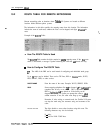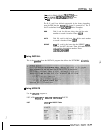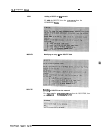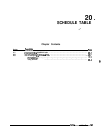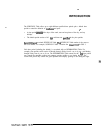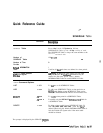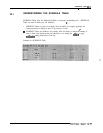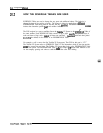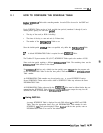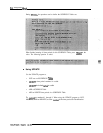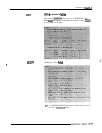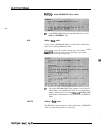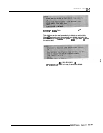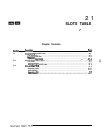
SCHEDULE Table
20-3
20.3
HOW TO CONFIGURE THE SCHEDULE TABLE
Defoe
a SCHEDULE Table with a matching number for each COS to be used in the PORT and
USER Tables.
Each
S
CHEDULE Table consists of eight possible time periods (numbered 1 through 8) and a
default period. Specify for each time period:
l
The days of the week (or HOL for holiday)
l
The times of the day to start and end (in 24-hour time)
l
The number of the INFORhMTION Table to use
Since the default period
cOvers
all
times not specified, only define the lNFORhL4TION Table.
g3’ A default INFORMATION Table is required for each SCHBDULB Table.
The Toshiba VP System contains 128 (O-127) SCHEDULE Tables equal to the number of COS.
Enter each time period requiring a different INFORMAlION Table. The remaining times use the
INFORhLATION Table defined as the default.
If a SCHEDULE Table has only a default (no time periods), press
Is/
when the program asks
for the INFORMATION Table for the first time period. Then enter the default INFORhfATION
Table number.
An INFORMATION Table number may be assigned to any or several SCHEDULE entries.
Several SCHEDULE Tables and/or entries within a SCHEDULE Table may reference the Same
INFORMATION Table.
All INFORMATION Tables referenced by the SCHBDULE Tables must be defined before they are
entered into the SCHEDULE Table. Before the Toshiba
VF’
System accepts the entry into the
SCHEDULE Table, it verifies that an lMORMATION Table exists.
H
Using INSTALL
An empty SCHEDULE Table is displayed for each COS defined in the PORT and USER
Tables. Enter the appropriate times, days, and INFORMATION Table number for each
SCHEDULE
able
time period displayed. When finished with the time periods, enter an
INFORMATION Table to be used for the default times.



